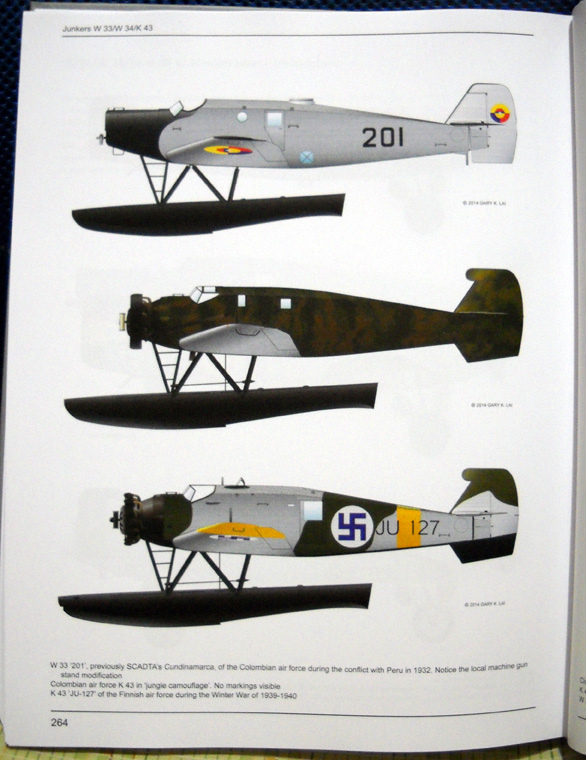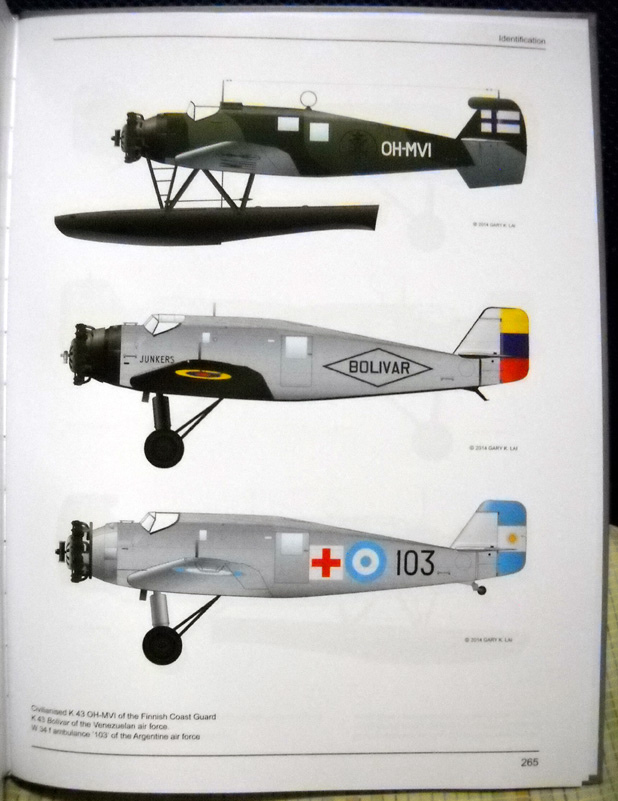格主於2014年幫瑞典友人Lennart Andersson所畫的Junkers W 33, W 34 and K 43







Junkers W 33, W 34 and K 43
21.6 x 27.9 cm, 272 pages, hard covers
270 b/w photos, five pages of drawings, many tables and full production list
Colour section with profiles and philately appendix
In 1919 a small six-seater aircraft, the Junkers F 13, lifted off from an airfield in Dessau in Germany on its first flight. A few years later, it made commercial sense to develop the F 13 further to meet increasing demands for more power, capacity and range, and this resulted in the W 33 and W 34 successors, expanded with the K 43 military variant and Ju 46 mail planes
From the mid-1920s into the early 1960s, the W 33/W 34 served in thirty-four countries on all the world's inhabited continents and was used in a multitude of roles. It was a real workhorse, not cheap to buy or fast in the air, but weather-resistant, robust and durable. Our new book is a tribute to this fabulous aircaft.
Our book on the Junkers F 13 was a success and when published in 2012 it received excellent reviews in a number of countries. The author team has now written a history of the F 13's successor, the Junkers W 33/W 34. Just like its predecessor, this type served with airline companies, air forces and other organisations in more than thirty countries between 1926 and the early 1960s.
Originally designed as a modification of the F 13, the inline-engined W 33 and radial-engined W 34 were continuously developed and improved for ten years. They were used for such diverse roles as freight and passenger transport, pest control, aerial photography, training, ambulance work and target-towing, and the military variant, the K 43, was equipped for bombing and reconnaissance. It saw active service in the Leticia and Chaco wars in South America, and W 33s and W 34s were used in offensive roles in conflicts in China, Iran and other places. Many aircraft were fitted with floats, and during the winter skis could be fitted in place of the wheels.
The W 33/W 34 is perhaps most famous for the altitude, distance and endurance records that were set with these types, and for the transatlantic and transpacific flights that were made with them, inspired by Charles Lindberg's Atlantic crossing in 1927.
In addition to those built by Junkers and sold to customers all over the world, the German Air Ministry ordered 196 W 33s and 1,974 W 34s for the Luftwaffe. Many of them were built under licence by Arado, ATG, Blohm & Voss, Dornier, Henschel, Miag and Weser. By October 1944 about 630 W 33s and W 34 remained in service with the Luftwaffe and at the end of the war, several were captured or taken over by the the countries that Germany had been allied to or had occupied.
http://www.eambooks.com/
延伸閱讀:
http://gkjlai.pixnet.net/blog/post/232060481
Orider:
http://www.eambooks.com/Orders.html


 留言列表
留言列表

